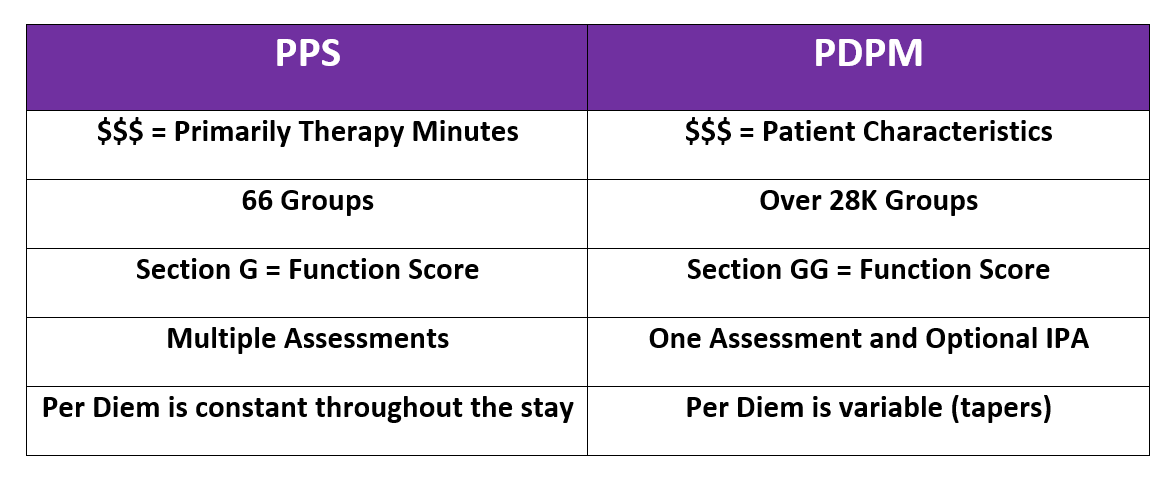Written By: Melinda Butler, OTR/L, OTD, BCPA
Occupational Therapist, Elder Care Consultant, Board Certified Patient Advocate
As we embark upon Worldwide Alzheimer’s and Brain Awareness Month, it’s important to consider the role of rehabilitation therapists as we fight to eradicate, educate, and empower the public on this global health issue. With 55 million people worldwide and their loved ones who deal with the crippling effects of Alzheimer’s and other forms of Dementia, there are likely few people who are not impacted either directly or indirectly by this disease. Consider these facts and figures about Alzheimer’s Disease from the Alzheimer’s Association:
CLICK HERE for the 2023 Alzheimer’s Facts and Figures provided by the Alzheimer’s Association
There is no cure and the disease is progressive. Therefore, rehabilitation is often not an expected outcome. So why is this topic so relevant to rehabilitation therapists?
Consider October 1, 2019:
Medicare reimbursement changed from RUGS (Resource Utilization Group) to PDPM (Patient Driven Payment Model) for post-acute care in a Skilled Nursing Facility. This shifted the focus of reimbursement from therapy minutes to patient presentation. The more medically complex the patient, the more providers can earn. This shift initially left many wondering if therapy’s distinct value would be minimized. However, for many providers, there has been an increased expectation for PT, OT, and ST to be more involved in cognitive interviews, assessments, and interventions as part of the admission/intake process for the 5-day assessment.
Many therapists in SNF settings are being asked to conduct interviews like the PHQ-9 (Patient Health Questionnaire) to assess for depression and depression severity; and the BIMS (Brief Interview of Mental Status) to assess attention, temporal orientation, and recall. This may be an adjustment initially; however, with regular administration, many therapists memorize the interview questions, allowing for a faster and more natural interview. More than ever before, therapists are now identified as integral members of the interdisciplinary team for PDPM reimbursement.
It’s now everyone’s job (not just the MDS Nurse) to ensure that what is coded on the claim, reflects the patient’s typical or usual care needs. These interviews can help therapists break the ice with patients while contributing to vital treatment planning and revenue-generating elements.
This video from CMS (Centers for Medicare and Medicaid) details the instructions and tips for ensuring accuracy with the administration of the BIMS:
Speaking of treatment planning, is there hope for teaching new skills to patients with Dementia? Well actually, patients with moderate to severe Dementia can still learn when given adequate time and using special techniques like:
- Errorless Learning
- Spaced Retrieval
- 3-word repetition
By working collaboratively as a passionate team, we can look forward to the day that we meet the first Alzheimer’s survivor! Be on the lookout for my new Summit podcast this summer and learn more about important cogitative interviews, assessments, and treatment strategies in The Fabulous Five of ADL Retraining in Older Adults!
Explore online continuing education courses from Melinda below:
Rehabilitation for the Frail or Cognitively Impaired Older Adult: Part I
Rehabilitation for the Frail or Cognitively Impaired Older Adult: Part II
Creating Value-Based Treatment
Telehealth in the Skilled Nursing Facility
Practical DME and Home Modifications for Aging Adults
Medicare Documentation: Practical Strategies for Justifying Therapy Services
Current Ethical Trends in Occupational Therapy
Coding and Billing for the PDPM and PDGM
Visit summit-education.com for more information.
References:
Alzheimer’s Disease and Dementia. http://www.alz.org/. Retrieved: May 19, 2023.
Brief Interview of Mental Status (BIMS). https://youtu.be/qv-RhrFQoWE.YouTube. Retrieved: May 19, 2023. Published: Oct 29, 2020.
Adam, M. D., Ness, D. K., & Hollman, J. H. (2023). Physical therapy provider continuity predicts functional improvements in inpatient rehabilitation. Journal of Neurologic Physical Therapy : JNPT, 47(2), 91-98. doi:https://doi.org/10.1097/NPT.0000000000000422
Marks, T. S., Giles, G. M., Al-Heizan, M., & Edwards, D. F. (2020). Can brief cognitive or medication management tasks identify the potential for dependence in instrumental activities of daily living? Frontiers in Aging Neuroscience, doi:https://doi.org/10.3389/fnagi.2020.00033
Routledge, Taylor & Francis in International Journal of Lifelong Education, 2017. Available at: http://dx.doi.org/10.1080/02601370.2017.1345994.

